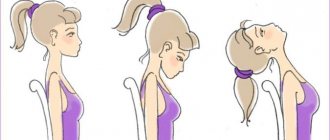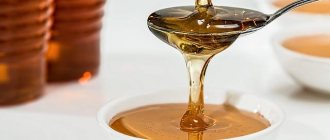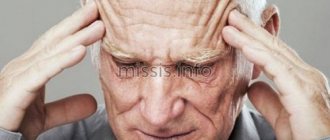Stroke prevention involves eliminating risk factors, drug therapy for underlying diseases, and performing exercises that strengthen the condition of the blood vessels in the brain. Doctors at the Yusupov Hospital take an individual approach to preventing vascular complications in each patient. In order to take into account all risk factors, neurologists and cardiologists carefully examine patients using modern devices produced by leading companies in Europe, Japan and the USA.
In order to avoid a stroke, you should know the causes that can cause acute cerebrovascular accident. The risk of stroke increases:
- age: after 50 years, every decade of life increases the likelihood of developing a stroke by 2 times;
- complicated heredity: the risk of stroke doubles if you have relatives who have suffered acute cerebrovascular accident;
- arrhythmia: 5% of patients suffering from cardiac arrhythmias develop ischemic stroke;
- narrowing or blockage of the carotid arteries and an increased tendency to form blood clots lead to stroke in 5-7% of patients;
- Arterial hypertension is one of the main causes of hemorrhagic stroke.
Patients who are at risk for the above parameters, after contacting the Yusupov Hospital, undergo an examination, which includes:
- ultrasound examination of large vessels (primarily the carotid arteries);
- electrocardiography;
- echocardiography;
- detailed blood tests to determine the lipid profile and susceptibility to thrombosis;
- determination of the level of homocysteine - an amino acid that leads to early atherosclerosis and the formation of blood clots. It increases the likelihood of stroke and heart attack by 5–8 times;
- computer and magnetic resonance therapy;
- duplex study of cerebral vessels;
- video electroencephalography;
- neuromyography;
- 24-hour Holter monitoring, arterial monitoring and ECG.
You can prevent a stroke by promptly consulting a doctor. Neurologists at the Yusupov Hospital examine a patient for a stroke if the following symptoms are present:
- sudden, temporary weakness or numbness of the limbs;
- short-term speech difficulties;
- periodic impairment of visual acuity;
- diplopia (double vision);
- imbalance or dizziness.
Primary prevention of stroke
Primary prevention of stroke is a system of measures aimed at preventing the first cardiovascular catastrophe. Doctors at the Yusupov Hospital recommend that patients use all methods of influencing areas of their lives that reduce the negative impact of traditional risk factors. The axiom is the formula: weight loss + quitting smoking nicotine + physical activity is more effective than medications. Lifestyle changes combined with regular, evidence-based preventive drug therapy can prevent stroke and add an additional 8-10 years to life.
Folk remedies after a stroke: what and how will help a faster recovery
A sedentary lifestyle gradually reduces the load on the heart, which begins to contract vigorously even at rest, and small capillaries, due to the lack of normal blood flow, narrow their lumen, as a result of which hypertension develops - the main cause of stroke.
Doctors around the world say that a healthy lifestyle will help reduce the risk of acute blood flow disorders in the brain by 85%. However, there is no need to immediately run to the gym and sign up for strength training - regular physical exercise will strengthen the heart muscle and tone the blood vessels.
During physical activity, the heart becomes more active and begins to intensively pump blood, the rapid flow of which prevents the formation of blood clots in the vessels and even blurs atherosclerotic plaques.
Regular exercise is beneficial!
Of course, doing exercises once a week will not lead to good results, so morning exercises for stroke prevention should be done daily.
You need to approach any physical exercise wisely, gradually increasing the load, which will inevitably lead to strengthening the overall tone of the body and reducing the risk of stroke.
Be healthy!
According to statistics, cerebrovascular accident is one of the main causes of mortality in the population. High blood pressure increases the load on the blood vessels of the brain, which can lead to disruption of their activity and, as a result, contribute to the development of stroke.
Stroke is a disease of the nervous system caused by blocked or ruptured blood vessels. To eliminate the severe consequences of this disease, you need to make as much effort as possible to return to normal life.
Therefore, in addition to the treatment prescribed by the doctor, treating stroke with folk remedies and following some simple rules play an important role in recovery.
Since ancient times, many healers have used “bloodletting” in their practice. To do this, they pierced the veins on both arms along the bend of the elbow and released “black blood.” When light blood began to flow, it was stopped, and it was believed that the danger had passed.
Simpler folk remedies after a stroke recommend placing a heating pad with ice or a wet towel on the head, and on the side opposite the paralyzed part of the body. You should not remove the ice until the headache stops, otherwise a relapse may recur.
It is also necessary to ensure the flow of blood from the head to the feet; for this, you can put mustard plasters or a heating pad with hot water on the feet, the main thing is to prevent them from burning. When the pain in the head subsides, you can rub the body and limbs with volatile ointment; its irritating effect has a distracting effect.
If swallowing reflexes are not impaired and a person can drink, medicinal plants for stroke will provide invaluable help. It will be useful to brew strong tea from sage; it has a vasodilating effect and relieves spasms, normalizes blood circulation in the vessels of the brain. Later you can take sage baths.
Hawthorn fruits have a similar effect on the cardiovascular system. The use of these tinctures helps to recover faster from a stroke and prevent its occurrence.
- One of the areas of stroke treatment is stroke prevention with folk remedies and a diet that excludes fatty foods, limits the consumption of salt, sugar, meat and flour;
- Drinking alcohol and coffee is unacceptable;
- it is preferable to eat more plant foods: raw vegetables, fruits and cereals;
- mental and physical gymnastics reduces the risk of disease;
- reading books, solving puzzles, problems and crosswords trains brain neurons;
- walking and light exercise are useful not only for preventive purposes, but also for maintaining health in general: the main thing is not to overdo it and prevent overload;
- it is also necessary to regularly monitor your blood pressure, take timely measures to normalize it, contemplation of swimming fish will help reduce pressure, if you wish, purchase an aquarium with fish, watch them and relax;
- Relaxation is also promoted by color therapy, which in this case recommends looking at blue, green or light blue.
Drug therapy
What medicine should I take to prevent a stroke? Cardiologists at the Yusupov Hospital carry out stroke prevention in patients suffering from diseases of the cardiovascular system in three areas:
- use of antihypertensive drugs;
- treatment with statins;
- antithrombotic therapy.
Antithrombotic therapy is the most effective. It has the following goal: preventing the formation of blood clots inside blood vessels and preventing stroke. In the clinical practice of cardiologists at the Yusupov Hospital, the following antithromboplatelet drugs are widely used:
- direct anticoagulants (heparin and its low molecular weight forms);
- anticoagulants - vitamin K antagonists (Warfarin is most often used);
- new oral anticoagulants (NOACs) – apixaban, dabigatran, rivaroxaban;
- platelet antiplatelet agents: acetylsalicylic acid, clopidogrel dipyridamole.
For the purpose of primary prevention of coronary embolic stroke in patients with atrial fibrillation, anticoagulants are used. If it is not possible to use them, acetylsalicylic acid is prescribed. This drug is recommended for patients suffering from coronary heart disease with clinical signs of obliterating atherosclerosis. If the patient has contraindications to acetylsalicylic acid, clopridogrel is used. Doctors at the Yusupov Hospital take an individual approach to the choice of antithromboplatelet therapy drugs for patients with a high risk of developing a stroke.
The risk of stroke is directly related to blood pressure levels. An increase in diastolic pressure of 7 mmHg is associated with a 42% increased risk of stroke. Blood pressure targets for low-risk patients are 140 and 90 mmHg. For people at high risk of developing a stroke (diabetes mellitus, previous cardiovascular diseases, chronic kidney diseases), cardiologists at the Yusupov Hospital achieve blood pressure levels below 130 and 80 mmHg.
Some patients with normal, slightly elevated or even low blood pressure need to take antihypertensive drugs if they have coronary heart disease or heart failure. For primary prevention of stroke, cardiologists prescribe the following medications:
- p-blockers;
- ACE inhibitors;
- calcium channel blockers;
- diuretics;
- angiotensin II receptor blockers.
There is currently no consensus as to which of these classes of drugs is more effective. As means of primary prevention, they all have approximately the same preventive potential, and the task of achieving target blood pressure figures comes to the fore. As first-line therapy, doctors at the Yusupov Hospital use thiazide and thiazide-like diuretics, as well as ACE inhibitors.
VKPB drops for stroke prevention
In folk remedies for the treatment of vascular diseases, plants such as valerian “B” (expands coronary vessels, normalizes blood circulation, soothes), horse chestnut – “K” (increases the strength of blood vessels, reduces blood viscosity, improves cholesterol metabolism), motherwort – “P” (helps with angina pectoris, hypertension), hawthorn – “B” (improves coronary and cerebral circulation, relieves arrhythmia, calms the heart muscle, normalizes blood pressure, sleep). Make alcoholic tinctures from these plants or, as a last resort, purchase them at the pharmacy. Mix them in equal proportions, apply 1 tsp. (50 drops) 3 times a day 30 minutes before meals. These drops are a good prevention of heart attack and stroke, increase immunity, relieve depression, and improve sleep. (HLS 2010, No. 10, p. 8)
Mumiyo in the treatment of stroke with folk remedies
Shilajit promotes the resorption of blood clots and restores damaged cells. Therefore, mumiyo is widely used in the treatment of stroke using folk remedies. Dilute 5 g of mumiyo in 150 ml of aloe juice. Take 1 tsp. 2 times a day before breakfast and at night. The course of treatment is 10 days, then a break of 4 days and a new course. (HLS 2011, No. 22, p. 7)
How to treat a stroke with pollen
Flower pollen stimulates the growth and restoration of damaged tissue, strengthens capillaries and blood vessels, and reduces cholesterol. Pollen is taken 1 tsp. 3 times a day before meals. (HLS 2011, No. 22, p. 7)
Folk treatment of stroke with tincture of lofant
Tibetan lofant is a unique plant that has enormous healing power and is a strong biostimulant. It has no side effects, so it can be used for a long time. Lofant alleviates the condition of the patient with hypertension, atherosclerosis, after a stroke, heart attack, and reduces the level of cholesterol in the blood. For all these purposes, prepare the following tincture: 50 g of dried flowers or 200 g of fresh ones, pour 500 ml of good vodka, leave for 3 weeks in a dark place, shaking 2 times a day. Take 30 minutes before meals, 2 times a day, 1 tsp, diluted in 30 g of water. The course of treatment is 30 days. Then a break of 1 week. Those who have suffered a stroke must take at least 3 such courses. (HLS 2012, No. 12, p. 35)
Folk remedies for those who have suffered a stroke
These funds are effective for the rehabilitation of a patient after a stroke. 1. Celandine. 1 tbsp. l. pour 1 cup of boiling water over the herbs, leave for 15 minutes, strain. Drink 2 tbsp. l 3 times a day before meals. The course of treatment is 3 weeks. 2. Maryin root 1 tbsp. l. Pour 1 cup of boiling water over dry peony roots and leave in a thermos for 1 hour. Take 1 tbsp. l. 4-5 times a day. The course of treatment for stroke is 1 month. 3. Sage This plant works well for those who have suffered a stroke. It is useful to take it internally as an infusion, and make baths with it (boil 200 g of sage in 10 liters of water for 5 minutes, leave for 1 hour and pour into a bath. Take a bath for 15-20 minutes. The course of treatment is 20-25 baths) 4 . Bay leaf . It must be infused in vegetable oil for 2 months (30 g per 1 glass of oil). Shake daily. Then rub this oil into the paralyzed limbs several times a day. 5. Juniper tincture. Prepare juniper tincture: 100 g of berries and 5 tbsp. l. chopped juniper branches per 500 ml of vodka, leave for 2 weeks. Rub the tincture into the numb parts of the patient’s body (HLS 2012, No. 6, p. 7)
Prevention of stroke and heart attack
The principles of preventing stroke and heart attack are very similar. The key task is to ensure that atherosclerotic plaques do not grow in a person’s blood vessels. And if the plaques have grown, then it is necessary to make sure that the tire, which separates their lipid contents from the bloodstream, becomes denser.
- Mechanisms of stroke and heart attack development
Almost a million people die from cardiovascular diseases every year in Russia. Most of these deaths are caused by rupture of atherosclerotic plaques in the arteries. An atherosclerotic plaque silently matures for years. A person living with her does not feel any symptoms. The covering of the atherosclerotic plaque gradually becomes thinner, then ruptures, its contents exiting into the vessel. The blood inside the vessel coagulates and a blood clot forms. Everything downstream of the vessel dies. If this is a heart vessel, then a fragment of the heart muscle (myocardium) dies—myocardial infarction occurs. If this is the brain, then the part of the brain with the cortex with which we think or “move” our arms and legs dies. A more rare hemorrhagic stroke is associated not with the formation of a blood clot inside a vessel, but with hemorrhage in the brain.
- Compounded cardiovascular history
The risk of stroke and heart attack in modern society is extremely high. Prevention is necessary for every resident of Russia, without exception. In fact, from the age of 15-20 years old, it is worth thinking about whether you are “going” to die from a stroke or heart attack? Care must be taken to ensure that atherosclerotic plaques do not grow. First of all, you need to know your family history - whether it is burdened with cardiovascular diseases or not. And if relatives at a certain age (father under 55 years old, mother under 65 years old) had a stroke, heart attack, coronary heart disease, or underwent surgery to treat atherosclerosis, then this can be regarded as a burdened cardiovascular history . In this case, cholesterol levels should be assessed at a fairly early age. The so-called familial form of heterozygous hypercholesteinemia is highly common - pathological conditions in which there is an abnormal increase in blood cholesterol levels associated with genetic “defects” (mutations in certain genes that play a role in cholesterol metabolism). It needs to be identified at the juvenile stage in order to properly plan prevention.
- Assessing the need for stroke and heart attack prevention
What is the optimal strategy for preventing stroke and heart attack? First of all, you need to eat right, never smoke and have a sufficient level of physical activity. Proper nutrition and exercise help control body weight and waist size, an increase in which also increases the risk of stroke and myocardial infarction.
There is a powerful link between blood pressure levels and the risk of stroke. Therefore, it is important to evaluate your blood pressure levels. And if you have a level exceeding 140/90 mm Hg. Art., then this is a reason to consult a doctor in order to properly plan the concept of prevention.
In order to understand whether non-drug measures are sufficient or drug prophylaxis is required, you need to measure your blood pressure at least once and analyze the level of total cholesterol and “bad” cholesterol (low-density lipids). Based on these data, the risk of stroke or heart attack can be calculated. It is determined using special scales. For example, there is a SCORE calculator that gives you a ten-year risk level: how likely you are to develop a fatal cardiovascular accident. Having received data on the degree of risk, you need to make a serious decision: how to organize prevention, is it necessary to use medications?
- Drug prevention of stroke and heart attack
The sooner you take up prevention, the more likely it is that you will have enough non-drug measures - reasonable nutrition, physical activity and proper handling of stress.
If, despite the fact that you feel healthy, the risk is high, then you need to take medications. They will either reduce the pressure, if necessary, or stabilize the cap of the atherosclerotic plaque. The most effective drugs for preventing stroke and heart attack are statins. These drugs do not lower cholesterol levels, they strengthen the fibrous cap of the atherosclerotic plaque, make it denser, stabilize it, preventing rupture. And if there is no plaque yet, then statins prevent it from growing. A person takes these medications and plays sports, eats right, monitors stress levels, and does not smoke.
The example of the USA is interesting. In Americans, deaths from heart disease are falling, but deaths from diabetes and obesity are rising. Many Americans eat hamburgers, smoke, and lead unhealthy, sedentary lifestyles while taking high doses of statins and antihypertensive drugs. This type of protection is not optimal, but it is possible.
Some people refuse to take any medications: they don’t like the smell, the color, the shape of the pill, the risk is unclear (not low, not high). In this case, the patient must strictly follow non-drug measures to prevent stroke and heart attack.
- Prevention of stroke and heart attack at the Ilyinsky Hospital
At the Ilyinskaya Hospital, we follow a modern path that allows us to deeply analyze what is happening with the vessels. First, we look at the profile of risk factors that a person has (cholesterol levels, stress, family history) and decide what the risk is that the patient has damaged blood vessels in the heart. In difficult cases, we evaluate the level of coronary calcium in the vessels of the heart; it allows us to very accurately understand whether there is damage to the vessels of the heart. If they are damaged, then most likely you will have to prescribe pills that will prevent the plaques from growing. If not, then you can try non-drug therapy.
Assessing the level of coronary calcium provides greater accuracy of the study, that is, it answers the question of whether there is atherosclerotic vascular damage, which can then result in a heart attack. In addition, if there is no coronary calcium at all, we can talk about the so-called “warranty period” - 10 years or more. In our clinic, we use all new biomarkers (including radiation biomarkers), which are included in recommendations for the prevention of stroke and heart attack.
No less important is the use of drugs that lower blood pressure in arterial hypertension; a separate text
.





